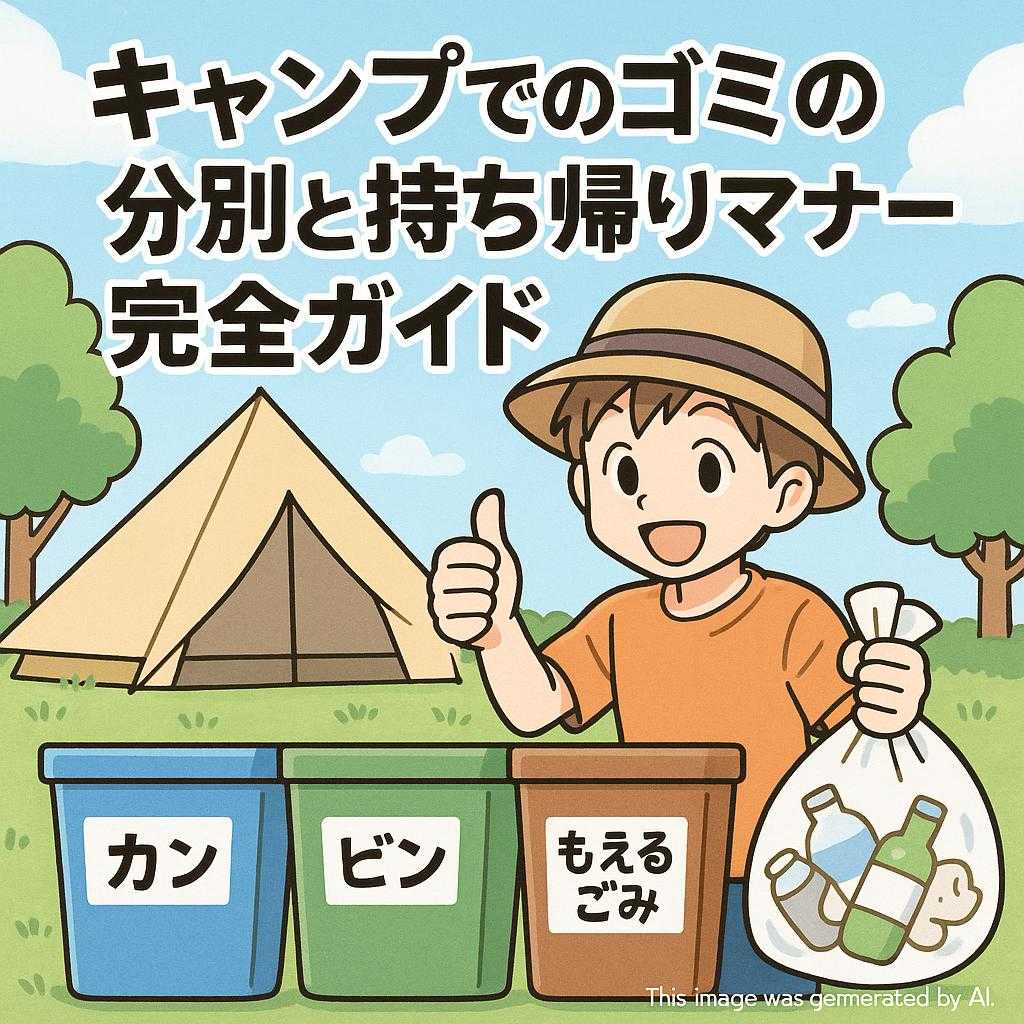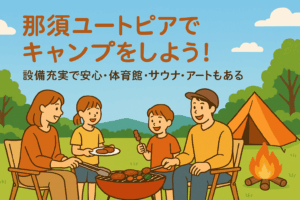
Sorting and Taking Home Trash at Camp
Camping is a wonderful activity to enjoy nature, but consideration for the environment is essential. Especially, sorting and taking home trash are basic manners for campers. When you arrive at the campsite, it’s important to first check the trash sorting rules at the reception. Many campsites have different sorting methods depending on the region, so gather information in advance. Also, don’t forget to bring trash bags. Particularly, PET bottles and cans need to be properly disposed of as recyclable resources.
When taking trash home, it’s important to secure space in your car and consider odor control. Using sealable containers or special trash bags is recommended. Also, pre-cutting and compacting food waste can make it easier to carry. Be sure to dispose of ashes and charcoal from campfires at designated places or handle them properly at home. Such considerations are a crucial step in passing on a beautiful natural environment to the next generation.
As an eco-friendly activity that’s easy for camping beginners to practice, picking up and sorting trash with children can foster a love for nature. Through enjoyable camping experiences, let’s enhance our awareness of environmental protection.
The Importance of Sorting Trash at Camp
Camping is a great opportunity to enjoy nature, but handling the trash generated during the activity is extremely important. Many campsites have different sorting methods depending on the region. Understanding and correctly implementing these is required. Upon arrival at the campsite, first receive an explanation about trash sorting at the reception. This information helps not only in environmental protection but also in preventing trouble with other users.
Basic Rules of Trash Sorting
Sorting rules vary by campsite, but common categories include “burnable trash,” “non-burnable trash,” and “recyclable resources.” Especially, washing and drying PET bottles and cans and sorting them correctly as resources is recommended. Also, it’s important to separate caps from the main body. By following these steps, recycling rates improve, and environmental impact is reduced.
Follow Local Instructions
Each campsite has its own sorting rules and notices, so it’s important to follow them. It’s a good idea to inquire with the campsite in advance to confirm the specific rules of that location. Also, in many cases, designated trash bags are required, so this should be considered as part of your preparation.
Take-Home Manners and Preparation
In many campsites, “taking all trash home” is a basic manner. Especially in public facilities or small campsites, there may not be trash stations. Therefore, it’s necessary to be well-prepared to take trash home.
Tools and Techniques for Taking Trash Home
For taking trash home, it’s good to prepare sturdy plastic bags or sealed containers. This can prevent odor leakage from food waste. Also, drying food waste as much as possible before bagging it helps with odor control.
Precautions When Transporting by Car
When transporting in a car, use seat covers to prevent dirt in case of an accident. Also, since odors may intensify in a hot car, it’s necessary to consider this and take appropriate measures.
Consideration for the Environment and Eco Activities
To minimize the impact on the natural environment, eco activities are also important. For example, practicing “Leave No Trace” camping allows you to enjoy nature without leaving any trace of your visit. This concept is a great opportunity to educate children as well.
Choosing Eco-Friendly Products
To reduce environmental impact, choosing reusable products or those made from biodegradable materials is important. By selecting products that can be used for a long time instead of disposable ones, the amount of trash itself can be reduced.
Eco Activities with Children
To help children learn about environmental protection, it’s good to involve them in picking up and sorting trash. This experience will have a positive impact on their daily lives.
How to Handle Ashes After a Campfire
After a campfire, it’s necessary to properly dispose of ashes and charcoal. In many cases, there are designated ash disposal areas, so dispose of them there. Also, don’t forget to dispose of them in a completely extinguished state, such as by soaking them in water.
Charcoal Extinguishing Methods
There are mainly two methods for extinguishing charcoal. The first is to extinguish it by soaking it in water. This method ensures safety in a short time. Also, consider using charcoal-burning equipment that can be reused even after soaking in water.
Conclusion: Coexistence with Nature
The way you address the trash problem generated during camping can greatly change its impact. By each person having the right knowledge and ability to act, coexistence with a beautiful natural environment can be achieved. Each action becomes a step towards the future, so let’s be more conscious and take action.
Q&A on Sorting and Taking Home Trash at Camp
Q1: How should I sort trash at the campsite?
Trash sorting methods vary by campsite. Upon arrival, first check with the manager or look at the information board. Generally, it’s common to sort into burnable trash, non-burnable trash, and recyclable items. It’s important to follow the rules specific to the region.
Q2: Are there any tips for reducing trash?
Yes, there are several tips. Bringing reusable dishes and cutlery can reduce the use of disposable items. Also, removing packaging from food in advance and bringing only the essentials is a good idea. This also lightens the load on the way back.
Q3: How should I handle ashes and charcoal from a campfire?
The method for handling ashes and charcoal from a campfire varies by campsite, so it’s necessary to check in advance. In many cases, you’ll need to take them home or dispose of them at designated places. Proper disposal is required to protect the natural environment.
Q4: What kind of trash bags should I prepare?
Usually, it’s safe to prepare large, sturdy trash bags. Some campsites may require designated bags, so in that case, purchase them at the shop or bring them from home. However, be aware that they may be sold out at the shop.
Q5: What should I be careful about when taking trash home?
It’s recommended to use double bags for odor and dirt control. Also, make sure to securely close the bags to prevent mixing with other luggage in the car. This allows for a comfortable journey.
Conclusion
At camp, it’s basic manners to responsibly handle the trash you generate. To protect the natural environment, be sure to sort and take home trash correctly. Understand the rules of each campsite and enjoy a fun outdoor experience.
Conclusion
Sorting and taking home trash at camp are very important elements in environmental protection. First, upon arrival at the campsite, check the trash sorting rules at the reception and follow the regulations of the place. Since sorting methods vary by region, gathering information in advance is crucial. Also, preparing sturdy plastic bags or sealed containers for taking trash home can prevent odors from food waste.
Furthermore, it’s necessary to properly handle ashes and charcoal after a campfire and make efforts to pass on a beautiful natural environment to the next generation. Practicing Leave No Trace camping and minimizing the impact on nature is also important. Eco activities and trash-picking experiences with children contribute to fostering environmental protection awareness. By each person having the right knowledge and actions, coexistence with nature can be achieved. Such efforts will be an important step towards the future.



